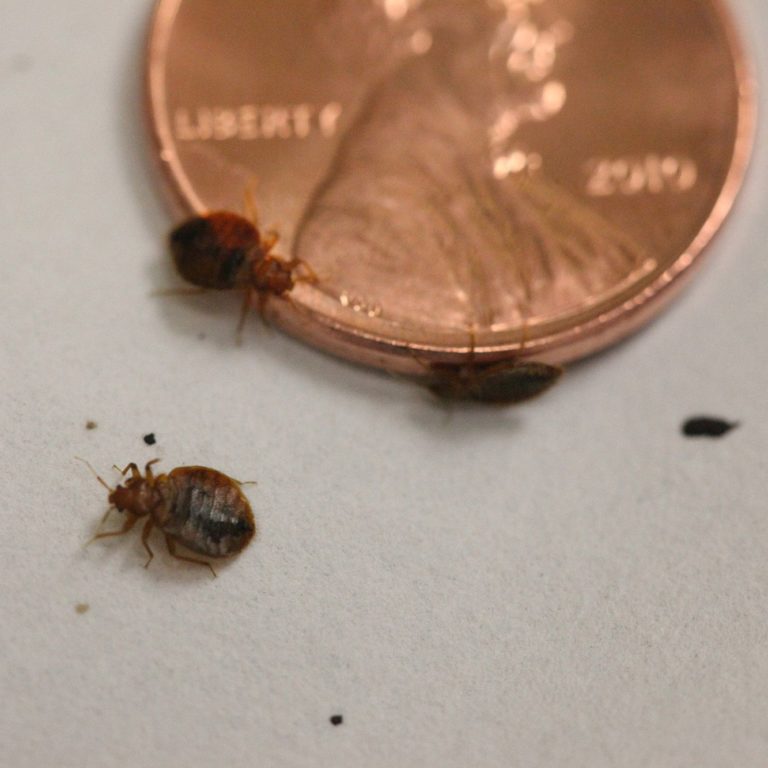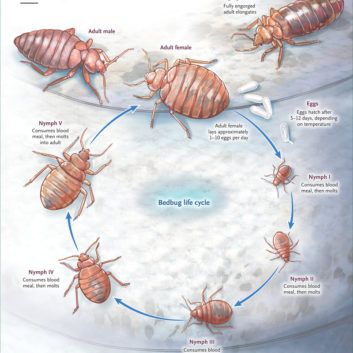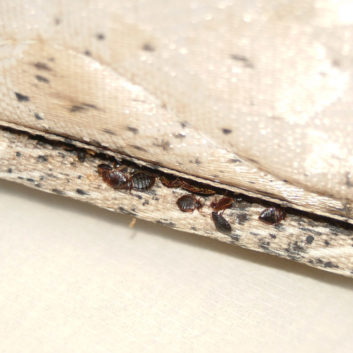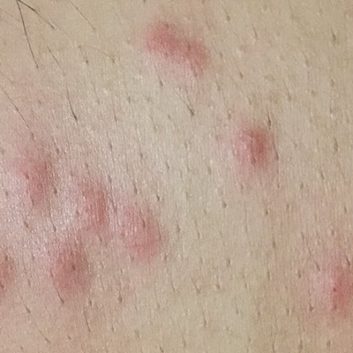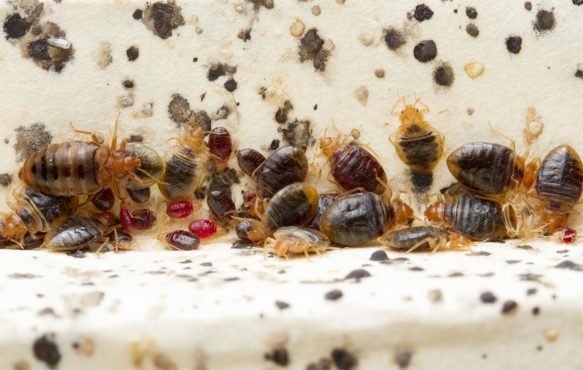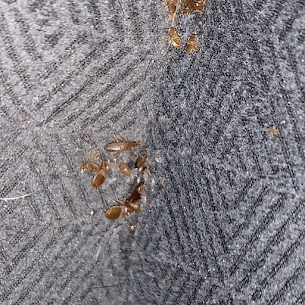Life Cycle of Bed Bugs
Female bed bugs lay between one and five eggs each day and may lay up to 500 eggs within her lifespan. Eggs are laid singly or in clusters within tight cracks or crevices. The egg is approximately the size of grains of salt and are milky in color. Within two weeks, eggs hatch and the nymphs begin to feed immediately. Nymphs pass through five molts before reaching maturity. Although nymphs appear similar to adults, they are smaller in size and are not yet sexually mature. 1st and 2nd molt nymphs are also yellow-white in color. After the second molt they begin to change to reddish-brown. In order to complete each molt, the nymph requires a blood meal. At average room temperature, nymphs become adults within five weeks. Adult bed bugs feed weekly. The average lifespan of a bed bug ranges from four to six months. However, they have been known to live up to a year under cool conditions with no food.




